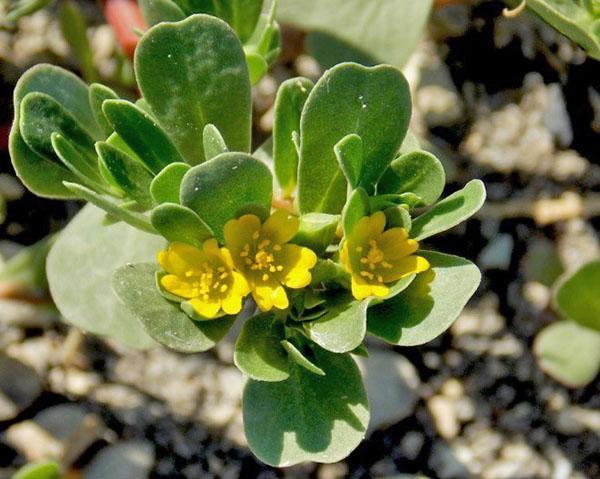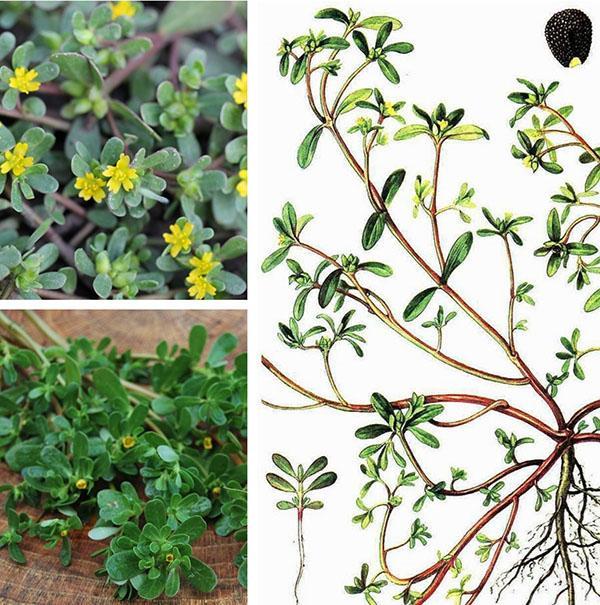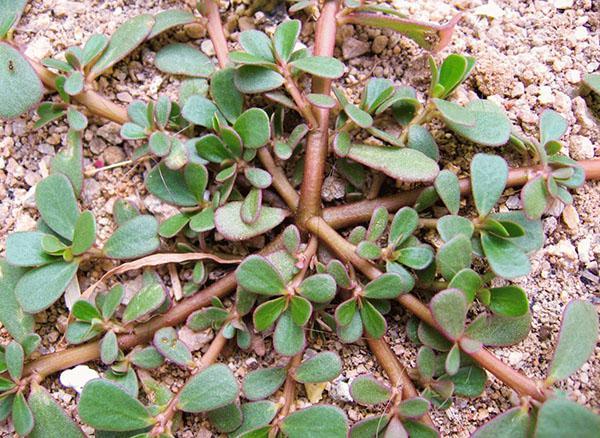It is important to know how to remove the garden purslane
 Garden purslane (Portulaca oleracea L.) is an annual herb related to weeds. People think about how to bring out the garden purslane because of its properties to braid and fill the plantings of vegetable crops, taking a lot of moisture and nutrients from the soil. Purslane is nevertheless edible, has tender, fleshy leaves with a sour tinge and tastes similar to spinach.
Garden purslane (Portulaca oleracea L.) is an annual herb related to weeds. People think about how to bring out the garden purslane because of its properties to braid and fill the plantings of vegetable crops, taking a lot of moisture and nutrients from the soil. Purslane is nevertheless edible, has tender, fleshy leaves with a sour tinge and tastes similar to spinach.
Plant features

Wild purslane can be found on all continents. The weed plant is thermophilic and hygrophilous, differs in creeping reddish shoots reaching a length of 10-40 cm. It blooms with small yellow flowers from June to September.
After flowering, the garden purslane forms a fruit - a multi-seeded box. When cracked, it spreads up to 1 million small, brown-black seeds.
The seeds fall off in September-October and are able to stay in the soil for up to 30 years without losing their germination.
Seeds germinate from the surface of the soil, or from a depth of no more than 1.5 cm. Especially active growth occurs at temperatures above + 25 ° C and to extremely high ones, as well as after watering or rain. In one season, garden purslane can reproduce up to 3-4 seed generations. Therefore, it is difficult to get rid of it in one year.
How to remove garden purslane
 For weed control, mechanical and chemical methods are used. The use of drugs is not always appropriate on site. Chemicals adversely affect soil composition and crop plants.
For weed control, mechanical and chemical methods are used. The use of drugs is not always appropriate on site. Chemicals adversely affect soil composition and crop plants.
To improve the quality of the soil and to get rid of weeds, observe crop rotation and sowing the area with solid crops such as barley, oats, or peas.
In places where purslane grows, onions, carrots and parsley are planted. They are able to suppress germination of weeds after one weeding.
One of the methods of how to remove sprouts of garden purslane and how to deal with them is mulching, weeding and digging.
Mulching
 Areas where the growth of a weed plant has been noticed is covered with a dense layer mulch, 5-10 cm high. You can use cut grass, hay or compost as mulch. A layer of mulch is covered with corrugated cardboard or dark garden wrap. In the absence of light and due to the compaction of materials, even hatching seeds will not be able to develop.
Areas where the growth of a weed plant has been noticed is covered with a dense layer mulch, 5-10 cm high. You can use cut grass, hay or compost as mulch. A layer of mulch is covered with corrugated cardboard or dark garden wrap. In the absence of light and due to the compaction of materials, even hatching seeds will not be able to develop.
Mulching is not only the way how garden purslane is brought out, but also an additional tool for improving the quality of the soil layer.
Purslane actively grows in well-lit areas, so by shading not only the seeds, but also the places of its growth, you can gradually remove the weed from the garden.
Weeding
 Weeding is carried out manually after loosening and with the obligatory pulling out of the plant by the root. The purslane weed is well removed from the ground, and unselected plant residues quickly resume their growth. The purslane, cut into parts, takes root by releasing aerial roots. Therefore, the torn-out plants are not left in the aisles and on the soil surface.
Weeding is carried out manually after loosening and with the obligatory pulling out of the plant by the root. The purslane weed is well removed from the ground, and unselected plant residues quickly resume their growth. The purslane, cut into parts, takes root by releasing aerial roots. Therefore, the torn-out plants are not left in the aisles and on the soil surface.
In the roots of the purslane, a reserve of moisture accumulates, which allows it to remain viable for a long time.To prevent re-rooting, all plant residues are burned or carried off the site. Only dried weeds can be used in compost pits. Purslane torn from the soil is dried under the sun, spreading it out on a film so that it does not touch the ground.
Purslane is weeded without waiting for its flowering, because freshly ripe seeds are able to immediately begin a new growth.
Purslane tends to actively germinate after watering. This ability is used to provoke germination - another method, as the garden purslane is removed from the site. The place where the weed grows is intensively watered several weeks before planting vegetable or flower crops and then the emerging seedlings are carefully weeded out.
Digging
 In order to remove the purslane from the garden, the places where it appears are deeply dug up. Plant seeds only germinate close to the surface. Therefore, after digging, they will end up in the lower soil layer, from where they cannot germinate. It is recommended to do a deep digging in advance of planting vegetables - in autumn or early spring, so that the work of beneficial soil bacteria can resume in the soil layers.
In order to remove the purslane from the garden, the places where it appears are deeply dug up. Plant seeds only germinate close to the surface. Therefore, after digging, they will end up in the lower soil layer, from where they cannot germinate. It is recommended to do a deep digging in advance of planting vegetables - in autumn or early spring, so that the work of beneficial soil bacteria can resume in the soil layers.
Compliance with crop rotation and a combination of methods to get rid of a weed plant will lead to a decrease and then the complete disappearance of purslane from the garden.